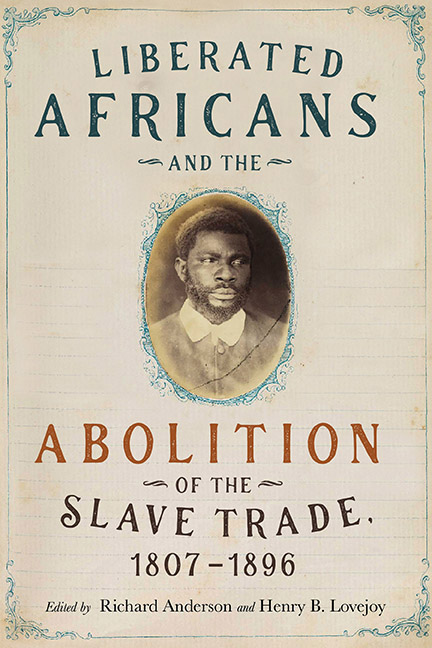Book contents
- Frontmatter
- Dedication
- Contents
- List of Illustrations
- Acknowledgments
- Introduction: “Liberated Africans” and Early International Courts of Humanitarian Effort
- Part One Origins of Liberated Africans
- Part Two Sierra Leone
- Part Three Caribbean
- Part Four Lusophone Atlantic
- Part Five Liberated Africans in Global Perspective
- Part Six Resettlements
- Bibliography
- Notes on Contributors
- Index
15 - Liberated African Settlers on St. Helena
Published online by Cambridge University Press: 21 March 2020
- Frontmatter
- Dedication
- Contents
- List of Illustrations
- Acknowledgments
- Introduction: “Liberated Africans” and Early International Courts of Humanitarian Effort
- Part One Origins of Liberated Africans
- Part Two Sierra Leone
- Part Three Caribbean
- Part Four Lusophone Atlantic
- Part Five Liberated Africans in Global Perspective
- Part Six Resettlements
- Bibliography
- Notes on Contributors
- Index
Summary
Between 1840 and the collapse of the Atlantic slave trade in the 1860s, the tiny island of St. Helena served as a major trial venue and receiving depot for slave ships captured by the Royal Navy's West Africa Squadron. In all, some twenty-four thousand people were legally freed by St. Helena's vice-admiralty court, though ongoing mortality within the receiving “depots” meant that fewer than eighteen thousand actually survived the slave ship and its immediate aftermath.1 St. Helena is extremely remote: set in the mid-Atlantic its nearest continental landfall is Angola, just over 1,800 kilometers to the east, with the Brazilian coast 3,260 kilometers distant to the west. It is also tiny: 17 kilometers long and 10 kilometers wide, it occupies an area of only 122 square kilometers.
The remoteness of St. Helena, while causing significant logistical problems in respect to its antislavery role, did not set it apart from other British possessions where liberated Africans were received. Indeed, the island's position in relation to trade winds and ocean currents, and its vital role as a staging post on the Atlantic voyage back from India, made it far better connected than many of its antislavery counterparts. Both Sierra Leone and Liberia, though critical centers for abolition, were peripheral to mainstream global networks, while places such as Gambia and Luanda were truly remote. Thus, despite its mid-Atlantic placement, St. Helena should be seen in the same context as other major maritime hubs, including Cape Town and Rio de Janeiro. It was, instead, the fact of it being an island, and an extremely small one at that, that made St. Helena different. Other places could absorb significant numbers of the liberated Africans they received into their expanding hinterlands, Cape Colony and Sierra Leone being prominent examples, but St. Helena was unable to do so. Self-evidently it had finite territory, while its population level was already close to the maximum number supportable. Moreover, its economy was based entirely on servicing passing maritime traffic, but by the 1840s this trade was beginning to decline, causing not only economic hardship but also undermining the colony's entire raison d’être.
- Type
- Chapter
- Information
- Publisher: Boydell & BrewerPrint publication year: 2020

